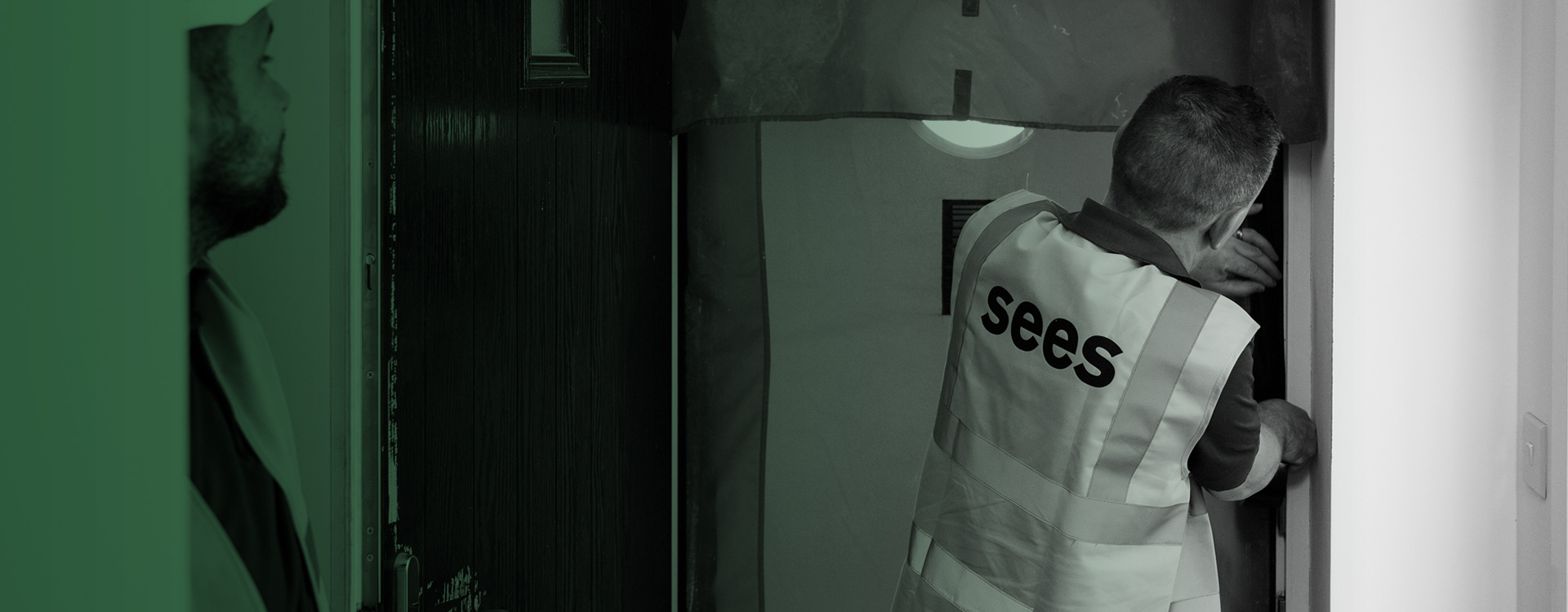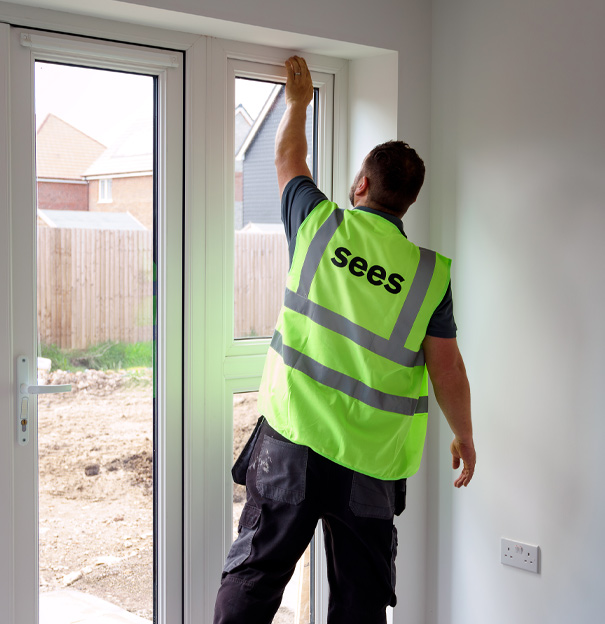
Domestic Air Testing
Home > Domestic Air Testing
Why Airtightness is so Crucial?
Air permeability testing is a mandatory requirement for new buildings under Part L regulations for both domestic and non-domestic buildings. This also affects the energy performance of the building while carrying out SAP or SBEM assessments as it is a pre-requisite for producing final SAP or SBEM calculations. A building with air leakages through its fabric will generally not be very energy efficient, as this causes heat loss leading to inefficient heating and higher electric bills.

Why choose SEES?
- Accredited members of the Air Tightness Testing and Measuring Association (ATTMA)
- Coverage all over the UK with no mileage charges
- We provide practical information & guidance prior to visit to ensure best results possible
- If required, we can provide same day certificates
- We use the latest high power blower door fan systems
These calculations take into account the carbon emissions generated from operating the building and are then used to produce a non-domestic EPC which indicates the energy efficiency rating of the property from A to G.
Building
Preparation
Compliant with BS EN 13829:2001 Method B – Test of the Building Envelope. Guidelines for preparation include:
- Internal doors to riser cupboards may be closed but not artificially sealed.
- Lift doors should be closed (not artificially sealed), and external lift shaft vents should remain open.
- All drainage traps should be filled with water. Incoming service penetrations should be permanently sealed.
- External doors and windows should be closed (except those connected to test equipment).
- Trickle vents, smoke vents, and passive ventilation systems should be closed but not artificially sealed.
- Mechanical ventilation and air conditioning systems should be turned off and temporarily sealed.
- AGA’S must be turned off and COLD
| Tester | ATTMA No. | Level 1 | Level 2 | EA | PH |
| Dave Thompsett | 1225 | ✔ | ✔ | ✔ | ✔ |
| Naomi Sadler | 1565 | ✔ |


